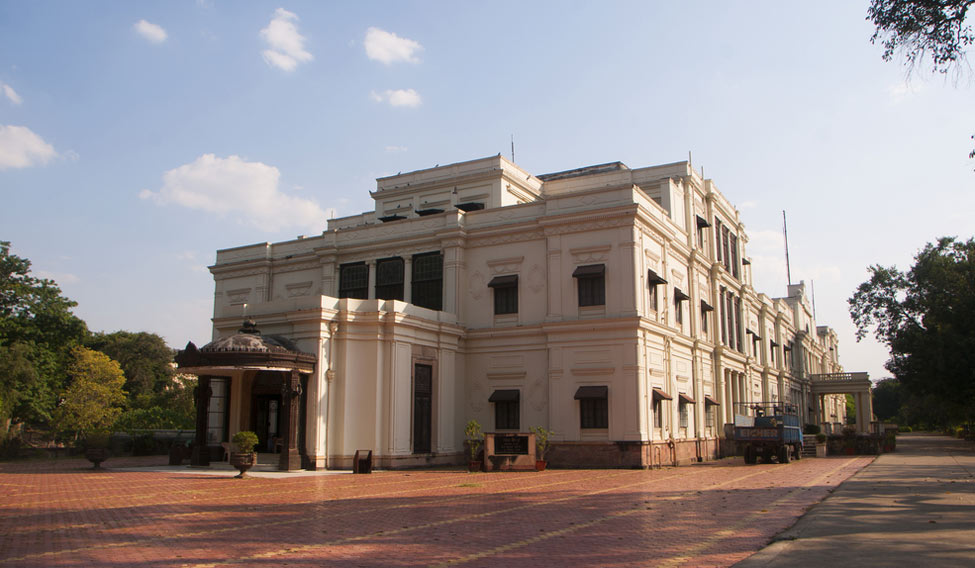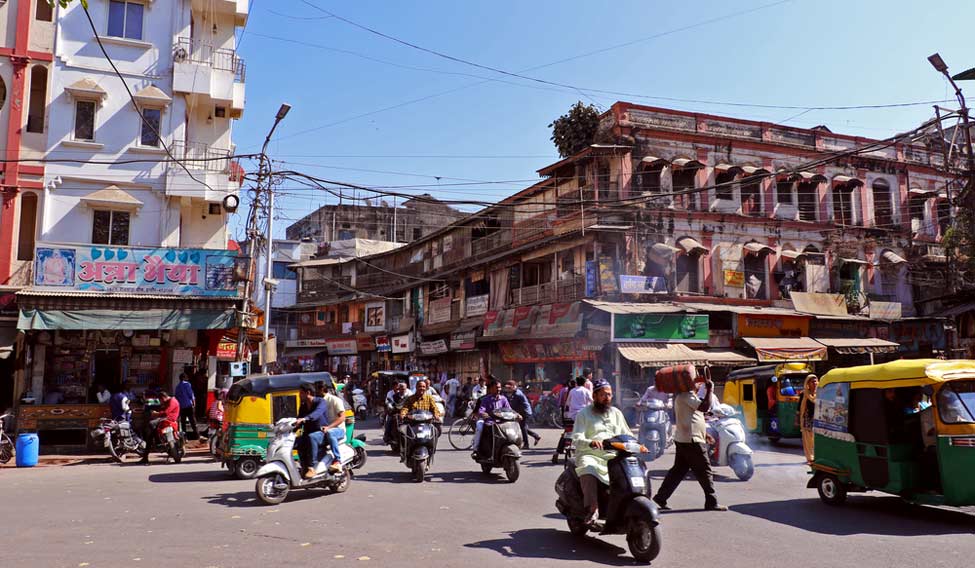In 1958, the then Prime Minister Jawahar Lal Nehru visited Madhya Pradesh's capital city, Bhopal. He stayed in the sprawling Raj Bhavan, commonly called Lal Kothi. Here, Nehru felt the urge to smoke a cigarette. However, his favourite brand—State Express 555 or 555—was not available in Bhopal, then a small town. It was Indore, which came to the rescue. A special plane was sent to pick up the steel case of the famous cigarette brand from the Indore airport.
Indore, often referred to as 'Mini Mumbai', offers a blend of modernity and tradition. Though a tier-two city, today, Indore contributes to more than 30 per cent of the total commercial revenue of Madhya Pradesh. The ninth largest city of India, Indore is also one of the fastest growing cities, in terms of GDP.
In May, the Swachch Survekshan 2017 survey declared Indore as India's cleanest city. The city's Municipal Commissioner Manish Singh has no second thoughts when he credits the people. He says, “It is the urban mindset of the local people and the rich legacy which helped us achieve this”. Singh is not wrong. The first master plan of the city was prepared in 1917 by Patrick Geddes, a Scottish biologist, who excelled as a town planner.
When Manish Singh became municipal commissioner, he had already served in the same capacity in capital Bhopal. “It was a kind of challenge to us to bring back the municipal services on track. Though the city invited an investment of over Rs 18,000 crore, people were unhappy with the civic amenities. Property prices were stagnant. All these issues were a concern for the government which wanted to showcase Indore as a model city,’’ says Singh.
After the cleanliness drive, public spitting has seen a 50 per cent drop says Singh. “Our machines don’t have to go cleaning the walls of the city as they used to do earlier. We have made the city dustbin free as door-to-door garbage collection and segregation at the generation point has reached near perfection level,’’ he said. To tackle open defecation, within an year, more than 12,500 toilets, 200 urinals and 190 public toilets were set up under sanitation drive.
In 2014, Indore was on the 149th position in cleanliness ranking of Indian cities. Last year, it jumped to the 25th position and made it to the top in 2017, grabbing the title from Mysuru.
Says Singh: “Unlike other newly developed cities, people here have an ownership feeling. During our campaign for public awareness which included paintings and murals on walls to organising skits, the best was ‘Roko-Toko’ initiative. This was started by a group of school children who used to start beating metal boxes loudly if they saw someone defecating in the open. This became a kind of movement and then people on their own formed such groups’’.
Declared a Special Economic Zone in 2005 by the UPA government, Indore first came to prominence in 1724 when it came under control of Baji Rao Peshwa and became a major trading hub between the Deccan kingdoms and Delhi. Spread over an area of 530 sq.km, the town served as capital of Madhya Bharat before 1956.
“Influenced by Maratha culture, Indore is prominent in history of medieval India,” says Riti Khandelwal, a heritage explorer. Within a 100 km radius, there are ample examples of religious and cultural heritage structures which epitomise the composite culture of the region, she says. Riti is involved in a project to conserve the Lalbagh Palace, seat of the Holkar dynasty. The gates of this palace are replicas of the gates of the Buckingham Palace, London. They were specially cast in England and shipped to Indore in 1920.
Indore has also found a place among the first 100 smart city projects of the Union Government. “The mindset of people of Indore is very business friendly and that is why all industries and business coming to Madhya Pradesh anchor here,” says Hitendra Mehta, an architect and city planner. Mehta was instrumental in getting a Super Corridor area in Indore where companies like IT majors like Infosys and Tata Consultancy Services have invested.
Mehta says, “The city has the potential to develop manifold as this is the only town in central India which has carried forward its traditional values and architecture with modern day requirements’’. The legacy of planned development since 1917 is being carried forward successfully by various government agencies till date, he said.
 The Lalbagh palace, Indore
The Lalbagh palace, Indore
Rajesh Johri, a scholar and writer, says, “The biggest advantage of the city is that it does not have any organised gangs like other metros. After 1990, there are no goondas left.” This has helped the city to grow into an educational hub. The peaceful surroundings and availability of basic amenities has attracted students and teachers alike to develop the place as a major coaching centre of Madhya Pradesh.
Known for its automobile, textile, pharmaceutical and education industry, the city boasts of an IIT and IIM. The Pithampur industrial area is one of Indore's major investment zone. It is spread over an area of 372 sq.km. Once called Detroit of India (now that tag is with Chennai) for its automobile industries, Pithampur now has The National Automotive Test Tracks, a world-class auto testing track facility spread over an area of 4,140 acres of land. Less than 50 km from Indore also lies the city of Dewas where companies like Tata, Kirlosker, Arvind Mills, Ranbaxy and John Deere have set up their manufacturing units.
Gautam Kothari, president of Pithampur Industries Association, says: “We are ahead not because of government support but because of the enterprise of our people.
“Our industries and businessmen took full advantage of the nearest port, Mumbai. The proximity to Mumbai and adoption of its business culture got us the name ‘Mini Bombay’,” he adds.
With more than 2,500 shops, Indore's cloth market, which recently completed 150 years, is one of the biggest in India. The market was at its peak before 1960 when there were 11 cotton mills in the town which used to spin cloth for whole of central and eastern India, except for Kolkata. Even today 35 per cent of women's wear like salwar-kurta and leggings are manufactured and sold from this market. The first cotton mill of Indore was set up in 1866, 12 years after the first such mill in India. The first in India was The Bombay Spinning Mill, set up in 1854 in Mumbai.
Hansraj Jain, president of Indore Cloth Market Association, says: “Indore has immense potential to reinvent itself. When the cloth mills were closed three decades back, our market immediately turned into a distributor market. Today we supply garments and clothes to Nepal, Rajasthan, Andhra Pradesh, Gujarat and Maharashtra.’’
Abhay Shahasrabuddhe, an entrepreneur in organic farming says: “We have one of the best and largest food variety in the country, that too, at a very low cost’’. The Chappan-Dukan shopping complex and Sarafa Market in the city are famous for their gastronomic delights. He says, “Indore is the headquarters of Malwa which is known for its rich culture and food. The saying ‘pag-pag roti, dag-dag neer’ (every step there is food and water in Malwa) originated from this land.’’
“In Indore, we are ready to adopt anything which is new and good for us. We never hesitate in adopting new ways of development’,’’ Shahasrabuddhe said.







